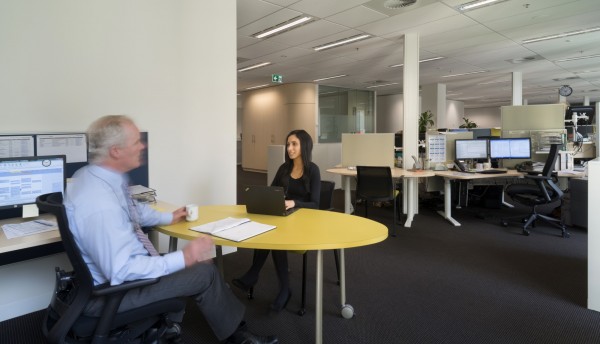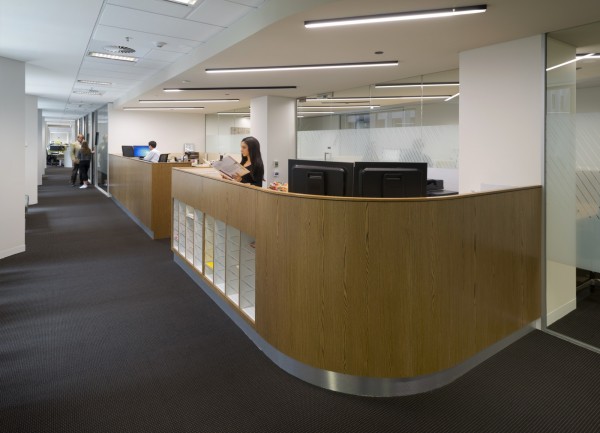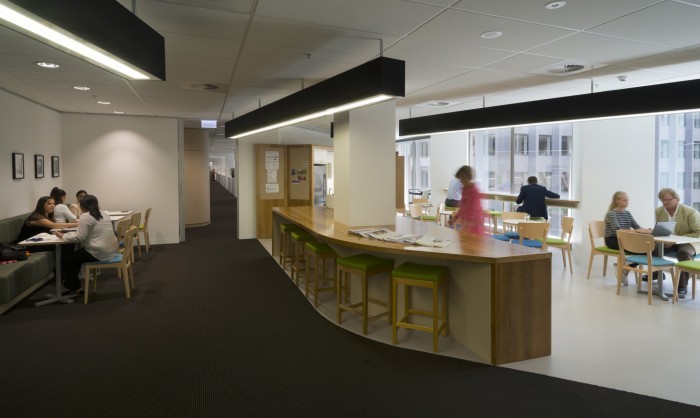Building Intimate Customer Relations
One organisation we recently worked with had a very unique strategy: To build intimate customer relations by developing more cohesion, participation and co-operation among the people doing things. As a result, they used their workplace design as a catalyst for change in two key respects: firstly they inverted the structure putting people closest to the customer at the top. Secondly, customer/member information was treated as the most valuable and treasured resource available that bound the various activities throughout the organisation. The workplace design makes these aspirations explicit through five design innovations.
Australian organisations commonly focus on strategies that drive cost efficiency, reliability and responsiveness. Very rarely do we come across an organisation whose focus is aimed squarely at the customer. The Victorian Legal Service Board and Commissioner is one such organisation. They represent both the consumer and also the provider of legal services, which we will refer to as 'the customer'.
Vision
The new workplace for the Legal Services Board + Commissioner is a catalyst for defining their vision, their structure and their systems. Their strategy and brand is focused on the customer: To build intimate customer relations by developing more cohesion, participation and co-operation among the people doing things.
Inverting Structure - The Mentoring Nook.
The CEO is leading the change by effectively inverting the structure. Within the structure the customer is at the very top, and all those people closest to the customer are right up there next to them. At the bottom of the structure is the CEO whose primary role is to support the general managers who support their team leaders who in turn support those people closest to the customer. As a symbol of this inverted structure, the CEO, the chairman and all of the general managers are assigned a 'Mentoring Nook' as opposed to an enclosed office. This 'Nook' provides a level of privacy, but makes the manager far more accessible to all of their direct reports.
Customer Information - The Drop Box
The organisation was in the process of introducing a fully digitised document management and customer relationship management system, but it still lives with the old paper system. Only through digitising paper information and then maintaining a central customer relationship management system can all parts of the organisation be accross all aspects of any particular customer. So as a symbol of this, the client 'invented' a central 'document drop box' immediately behind the main reception. In some ways this also acts as a physical point of connection between staff and the customer. All documents coming in and out of the organisation have to pass through the 'drop box'.
Cross Functional Interaction - The Piazza
Having a central digital depository does not automatically make people want to share information and ideas accross functions. To bring people together, to make them bump into each other and share stories and ideas the client adopted a technique that dates back to Roman times - the Piazza. The central Piazza is at the core of the floor plan and no one can escape the prominade and not be seen. The Piazza is also a gathering place, with a variety of settings for short - stand up conversations.
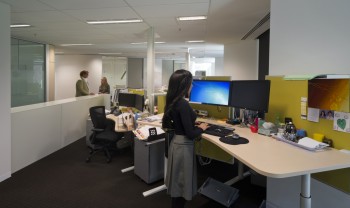 |
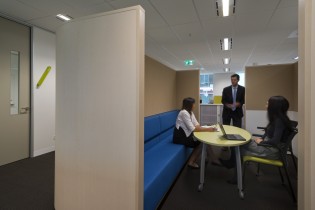 |
Giving People Space and Identity - The Neighbourhood
With the growing trend towards Activity Based Working and non territorial workspace, this client wanted all the benefits but without any loss of personal space. Overall the floor area per person increased from about 15m2 to approximately 18m2 per person. Each team is provided with a suite of collaboration spaces as well as generous personal space that maximises head to head distances for acoustic and visual privacy. A number of desks feature sit-stand operability, and all are allocated dual monitors.
